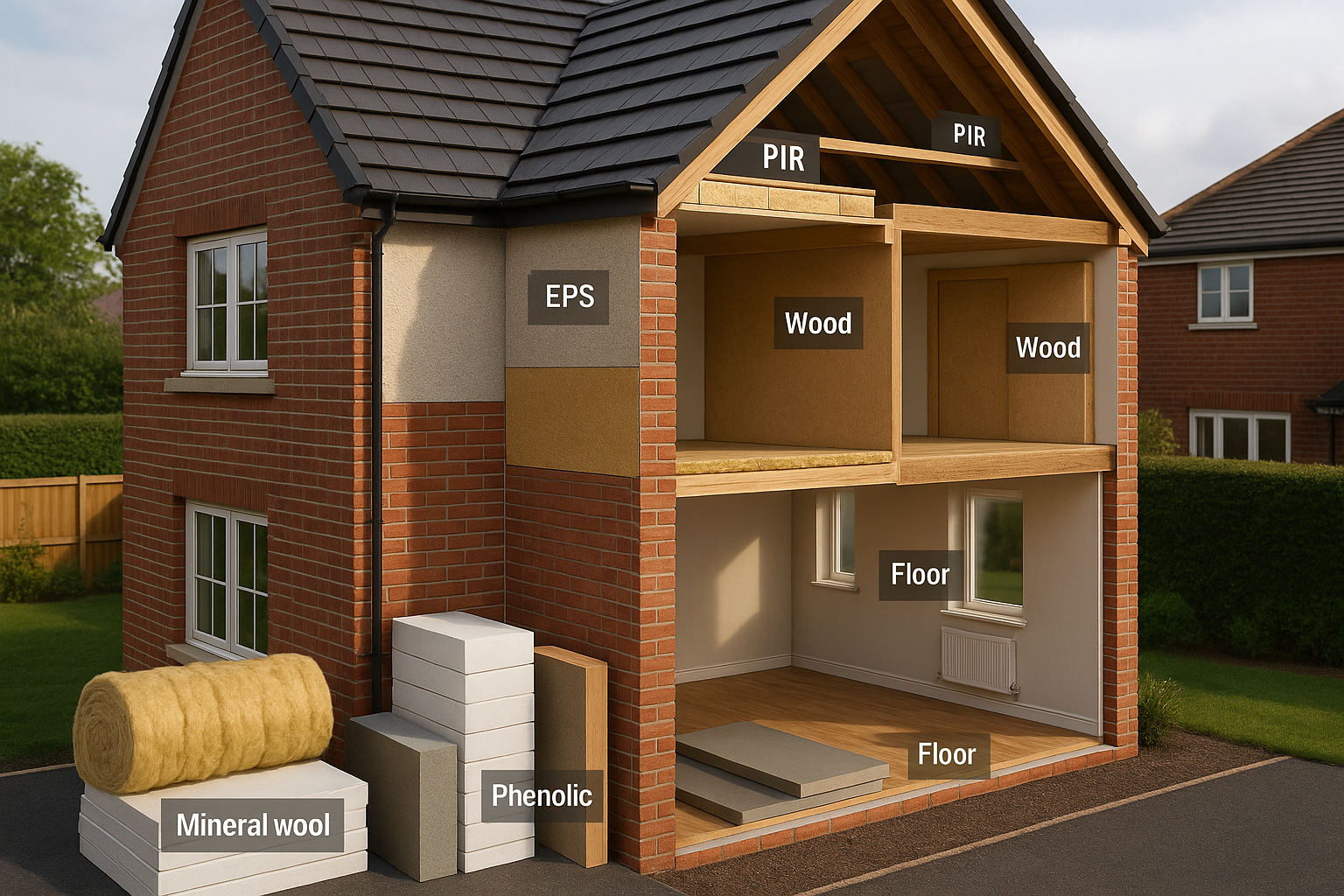The Best Thermal Insulation for Buildings: A Plain-English UK Guide
Why the material really matters
With energy bills rising and weather extremes more common, choosing the right insulation makes a visible difference to comfort and running costs. The challenge? There are several good options - each with different strengths. This guide simplifies the decision so you can pick confidently.
How to choose (quick framework)
- Space available: tight cavities and shallow rafters favour higher performance per mm.
- Moisture risk: plan for ventilation, vapour control and water resistance where needed.
- Fire behaviour: check combustibility ratings and follow regulations.
- Acoustics: some materials absorb sound better than others.
- Budget & install: balance upfront cost, ease of fitting and long-term savings.
Material by material
Mineral Wool
Made from natural or recycled stone/glass fibres. A popular, versatile choice for lofts, stud walls and intermediate floors.
- Pros: good thermal and acoustic performance; non-combustible; easy to trim and fit.
- Considerations: protect from moisture ingress; performance drops if compressed.
- Best for: loft layers, between studs/joists, acoustic upgrades.
Expanded Polystyrene (EPS)
Lightweight rigid boards often used in external wall systems and floors.
- Pros: budget-friendly; easy to handle; consistent board sizes.
- Considerations: combustible; avoid solvent-based adhesives; needs careful detailing near heat sources.
- Best for: EWI systems, floors, packaging thermal breaks.
Phenolic Foam
High thermal performance in thinner build-ups — useful where depth is at a premium.
- Pros: strong performance per mm; helps reach target U-values with less thickness.
- Considerations: higher upfront cost; follow manufacturer guidance on fixings and linings.
- Best for: tight roof and wall build-ups.
Wood Fibre
Natural, breathable boards that contribute to moisture buffering and summer comfort.
- Pros: vapour-open; helpful acoustic properties; low embodied aesthetic.
- Considerations: thicker build-ups; protect from liquid water during install.
- Best for: eco-retrofits, internal wall linings in breathable build-ups.
Polyurethane (PIR)
Rigid boards with strong thermal resistance, similar family to PIR.
- Pros: high performance; relatively low thickness for given targets.
- Considerations: typically combustible; accurate cutting and tight joints are key.
- Best for: roofs, linings and floors where space is limited.
Aerogel
Ultra-slim, premium solution for the most space-constrained areas.
- Pros: excellent thermal performance at minimal thickness.
- Considerations: expensive; typically used as part of a hybrid detail.
- Best for: reveals, bridges and hard-to-insulate details.
Quick comparison (at a glance)
| Material | Thermal per mm | Acoustics | Moisture behaviour | Fire behaviour | Typical uses |
|---|---|---|---|---|---|
| Mineral Wool | Good | Strong | Keep dry; VCL where specified | Non-combustible | Lofts, studs, floors |
| EPS | Moderate | Limited | Low water uptake; avoid solvents | Combustible | EWI, floors |
| Phenolic | Very high | Moderate | Follow manufacturer guidance | Check system rating | Thin roofs/walls |
| Wood Fibre | Moderate | Good | Vapour-open; protect from wetting | Check board rating | Breathable linings |
| PIR | High | Limited | Seal joints; manage vapour | Combustible | Roofs, linings, floors |
| Aerogel | Excellent | Limited | As per system | As per system | Reveals, bridges |
Making the choice
Match the material to the location and objective: some excel in slim build-ups, others in acoustic control or breathability. Think long-term — good detailing and installation protect performance for years.
Need a hand?
Buy Insulation can help you compare options for your project and supply the right materials at competitive prices.
Tip: if depth is tight, consider a hybrid build-up (e.g., rigid board plus mineral wool) and confirm the U-value for compliance.


